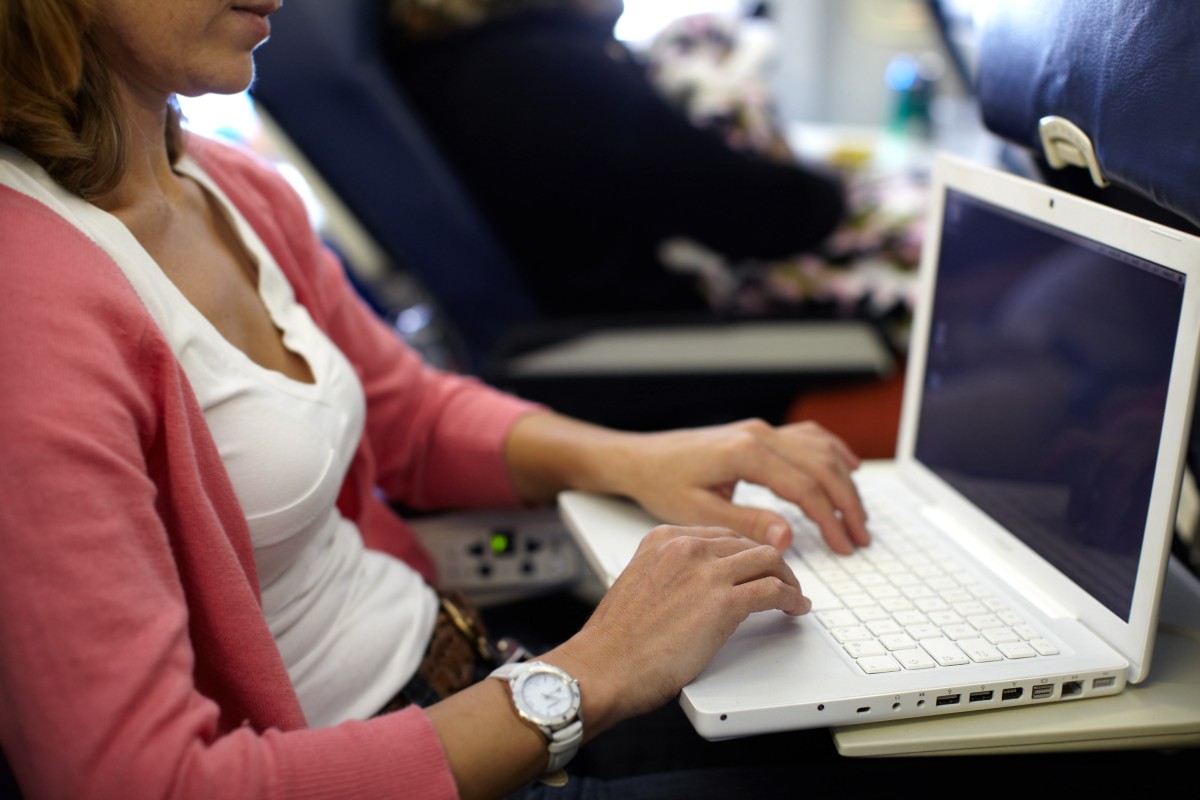Have you been on an airplane and realized your laptop battery was dying. Then, when you went to charge it, you found out there was no plugs nearby or one that didn’t fit your charger? Our guide to laptop power ports on planes may save your day if you’ve got work to do on your flight – or if you have personal matters that demand a charged computer.
It’s best to fully-charge your equipment at home, or before you leave for your trip. But sometimes things happen and you’re left with a dead batter.
Sometimes you’ll be able to find a space at one of the charging stations in the airport, but try not to count on that.
The following is a guide to laptop power ports on planes – and to the different adapters you may need for charging.
Hopefully, this guide makes it easier for you to take care of business in-flight – or to stay fully charged if you want to relax and watch a long movie on the plane.
Choose the Right Airline and Airplane
The first thing you’ll need to do to stay fully charged and ready for computing is to find an airline – and an airplane – that provides a laptop power source (do this before you book).
Some airlines have laptop power ports near every seat and others provide them only on select seats.
So, use this guide to laptop power ports on planes to find out the likelihood of a carrier offering the charging solution that you need:
- Virgin America – Virgin provides 1 standard and 2 USB ports between each of the seats on their planes (so you need to share with the person next to you).
- AirTran – AirTran does not offer power outlets on their flights.
- Delta Airlines – Delta features power outlets only in First Class on select 737 and 757 planes, and on all 767-300 planes (domestic only). USB ports are found in all seats on 737-700 737-700, 737-800, 757-200, 767-300, 767-400ER, and 777-200ER airplanes featuring Delta on Demand.
- Southwest – Southwest does not offer power outlets on their planes.
- US Airways – US Airways features 110V AC ports in First Class and Envoy seats on 757-200, 767. 330-200, and 330-300 planes. The 330-300 aircraft features 15V DC ports in economy seats, but you’ll need an adapter. US Airways’ 330-200 planes include USB ports in each seat and the 330-300 planes have USB ports only in Envoy seats.
- United Airlines – On United Airlines, you’ll find 110V power outlets in the premium seats on 747-400 aircraft. Power outlets are said to be coming to most United Economy Class planes. International flights with United Airlines feature power outlets on some 737-800 and 757-300 planes.
- American Airlines – This airline offers power outlets on most of their planes, but some are DC outlets like you’ll find in a car instead of AC power (which means you may need an adapter). First Class and Business Class seats on most American Airlines planes have outlets at every seat, while the main cabin offers them in select rows (check with American Airlines).
- Air Canada – Most of Air Canada planes have a 110V power outlet near each seat, and they typically offer a USB port at each seat.
- Alaska – Alaska Air planes usually do not have power outlets.
- Jet Blue – Jet Blue’s Airbus A321 aircraft features power ports that are accessible from every seat. These ports are internationally compatible, do not require an adapter, and feature a separate USB input. Customers in Jet Blue’s Mint Experience cabin have access to 2 power ports.
This is just a sample of the in-flight power ports on planes in the United States. For more detailed information on a specific carrier, check with that airline.
Types of In-Flight Power Ports
Now that you have an idea of the availability of in-flight power ports, let’s talk about the kinds of ports you’ll find.
- AC Power – AC Power is the standard wall power charger that came with your laptop, iPhone, or iPad.
The AC power on an airplane is usually 110V AC, and it features a receptacle that’s semi-universal and accepts the following plugs: US non-polarized 2-blade plug (both blades are same size), US polarized 2-blade plug (one blade is bigger than other), US non-polarized 2-blade plug with ground (3-prong), European standard 2-cylindrical prong plug (2 round prongs).
- DC Power (Cigarette Power) – This is the type of power port that you’ll find in most cars. On airplanes, this plug typically has 15V DC power at up to 75 watts per outlet. If you want to plug in your laptop, you’ll need an adapter (sometimes called an air/ auto adapter).
- EmPower DC Power – EmPower is a widely-installed in-seat power system on many aircraft. More than 40 airlines, in fact, use this type of power outlet.
EmPower provides 15V DC power at up to 75 watts per outlet. You’ll need a power outlet that is compatible with EmPower to use this port (if you have a Cigarette DC adapter, you can just buy a small adapter that will let you hook it up to EmPower).
If you’re wondering whether the available power will be enough to charge your laptop or device, consider the following:
- Most power systems on airplanes are limited to 75 watts of power per seat, which means a new 17’’ laptop might not get enough juice to stay charged. Some laptops just use the power to operate, and not to charge. Others won’t work at all if they don’t get enough of a charge.
- Airlines like Continental specifically state that they do not want passengers using outlets to charge their devices. Apparently, working or playing around on a laptop on their planes is okay, but they don’t fancy themselves as a free source of charging power.

 En
En Es
Es Fr
Fr











